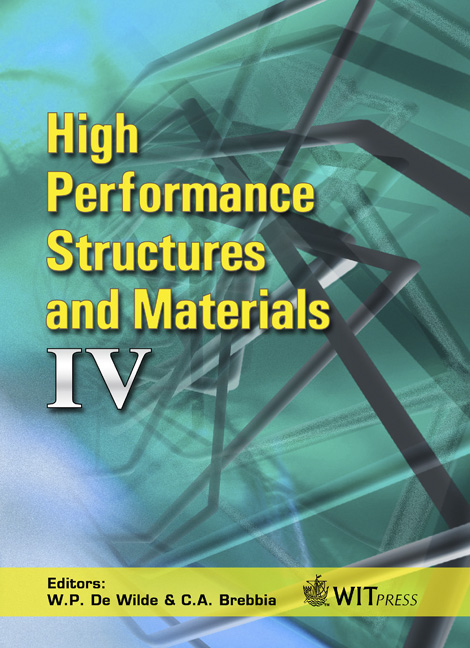Structural Studies Of Snx-Sb15-Se85-x Chalcogenide Glasses
Price
Free (open access)
Transaction
Volume
97
Pages
10
Page Range
493 - 502
Published
2008
Size
485 kb
Paper DOI
10.2495/HPSM080501
Copyright
WIT Press
Author(s)
A. B. Adam, S. Sakrani & Y. Wahab
Abstract
Structural studies of Snx-Sb15-Se85-x chalcogenide glasses A. B. Adam1, S. Sakrani2 & Y. Wahab2 1Department of Electrical and Electronics Engineering, Universiti Teknologi PETRONAS, Malaysia 2Department of Physic, Faculty of Science, Universiti Teknologi, Malaysia Abstract Glass formation tendency has been studied for five different compositions of the Snx-Sb15-Se85-x system, where x = 0, 5, 10, 12.5, and 15-mole %. Melt quench-synthesised samples have been characterised using a variety of experimental techniques, including X-ray diffraction (XRD), Fourier transform infrared spectroscopy (FTIR), Raman spectroscopy, differential thermal analysis (DTA), and density measurement. The XRD analysis for x = 0 up to 12.5-mole % gave an indication of amorphous phase, while for x = 15-mole %, it showed a tendency of crystalline structure. The results obtained from FTIR showed a shift in IR-peak intensities and widths from the long to the short wavelengths upon the addition of Sn-mole %. This change implied the breaking of Se-chains that appeared around 208-250 cm–1 as well as the occurrence of pyramidal SbSe3 and asymmetrical tetrahedral SnSe4 modes around 176-208 cm-1and 125-145 cm-1, respectively. In addition, Raman spectra revealed a pyramidal SbSe3 peak located at 190 cm-1. The intensity of this peak increased and shifted to183 cm-1 when Sn-mole % was added to the system. Differential thermal analysis revealed that the glass transition temperature decreased with an increase of Sn-mole %. The results confirmed the validity of using 4, 3, and 2 co-ordination numbers of Sn, Sb, and Se, respectively, in the amorphous samples. Keywords: XRD, DTA, FTIR, Raman, Sn-Sb-Se-chalcogenide glasses. 1 Introduction One of the most challenging contemporary problems for structural materials science is the collection of sufficiently comprehensive experimental data sets
Keywords
XRD, DTA, FTIR, Raman, Sn-Sb-Se-chalcogenide glasses.





